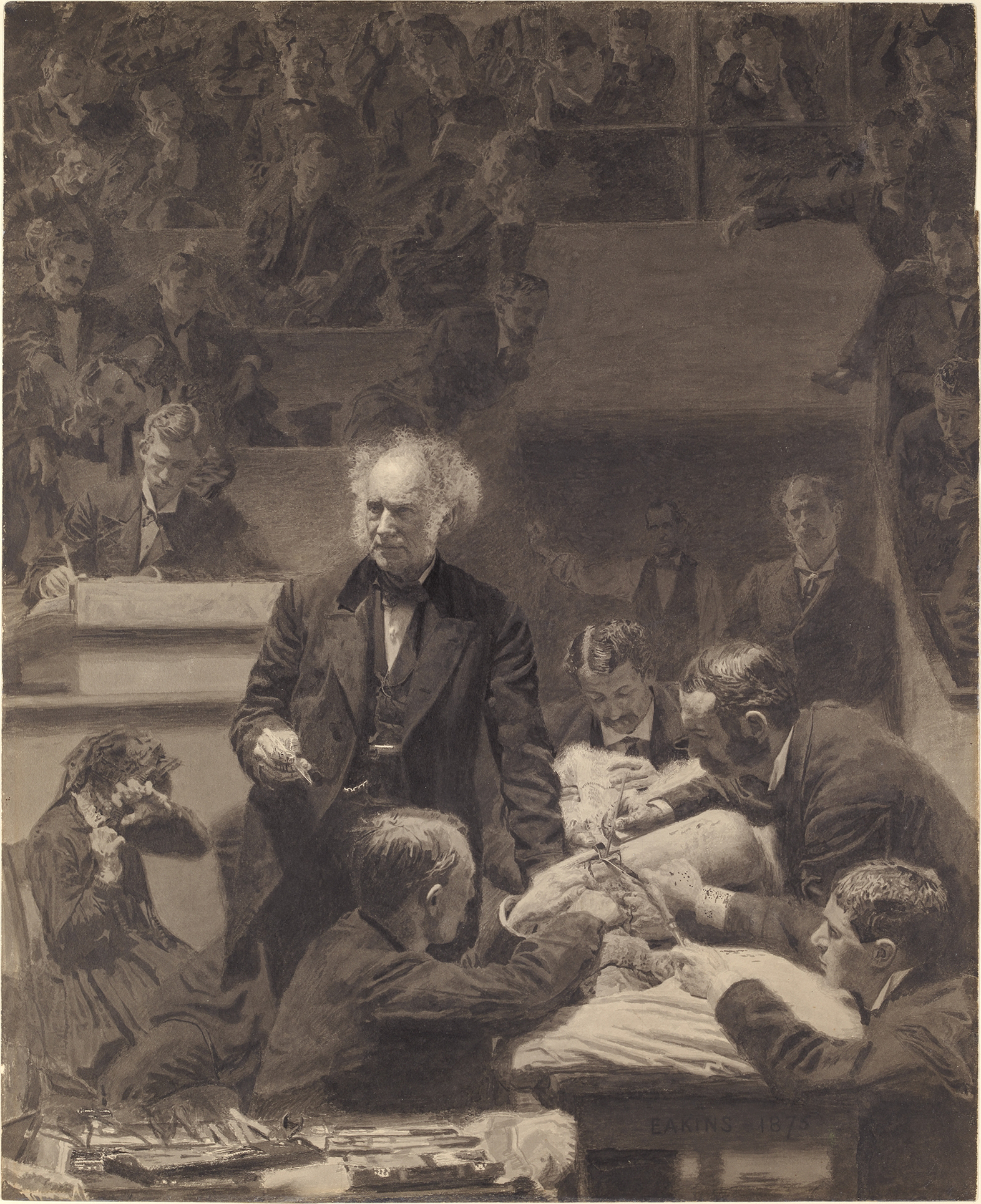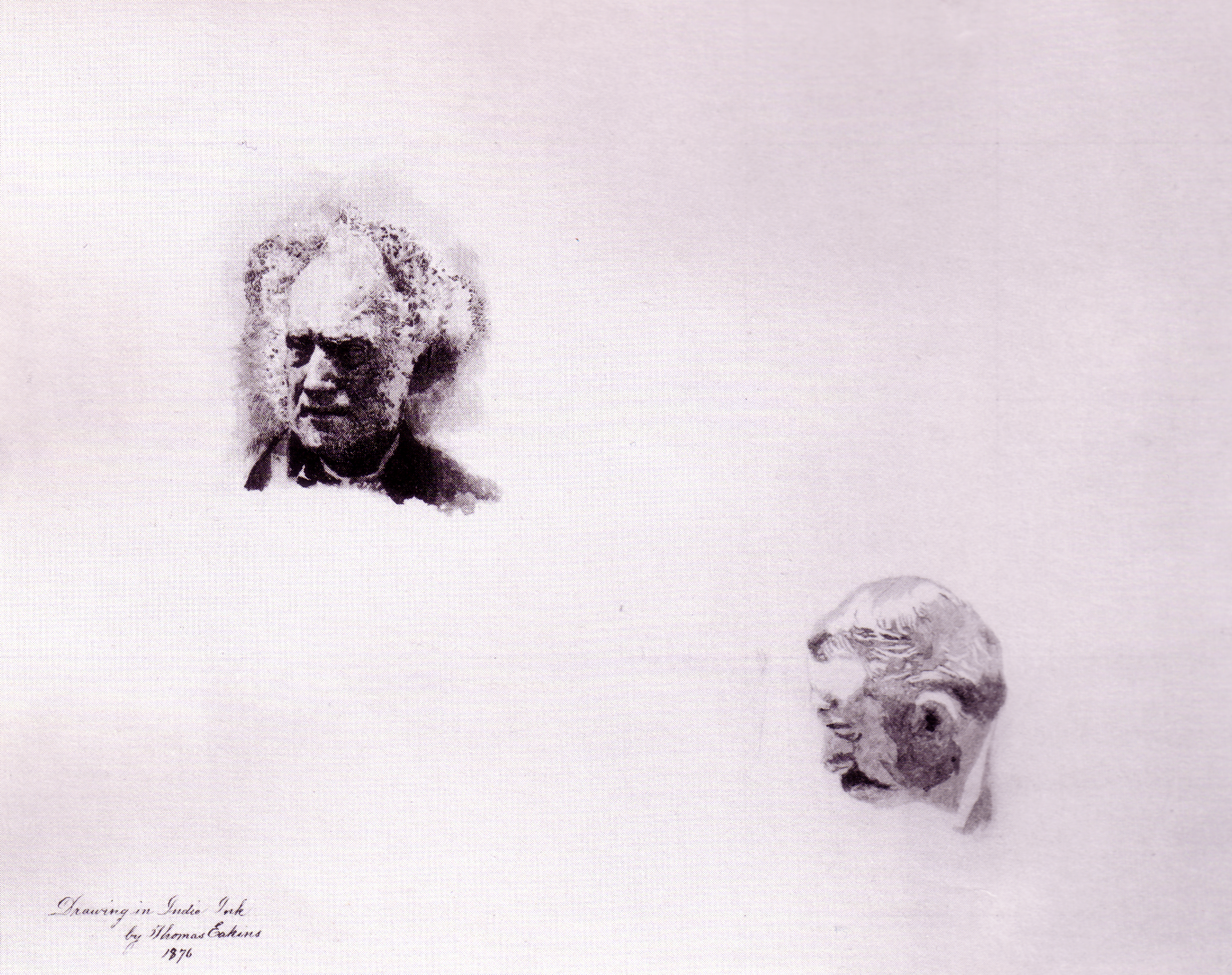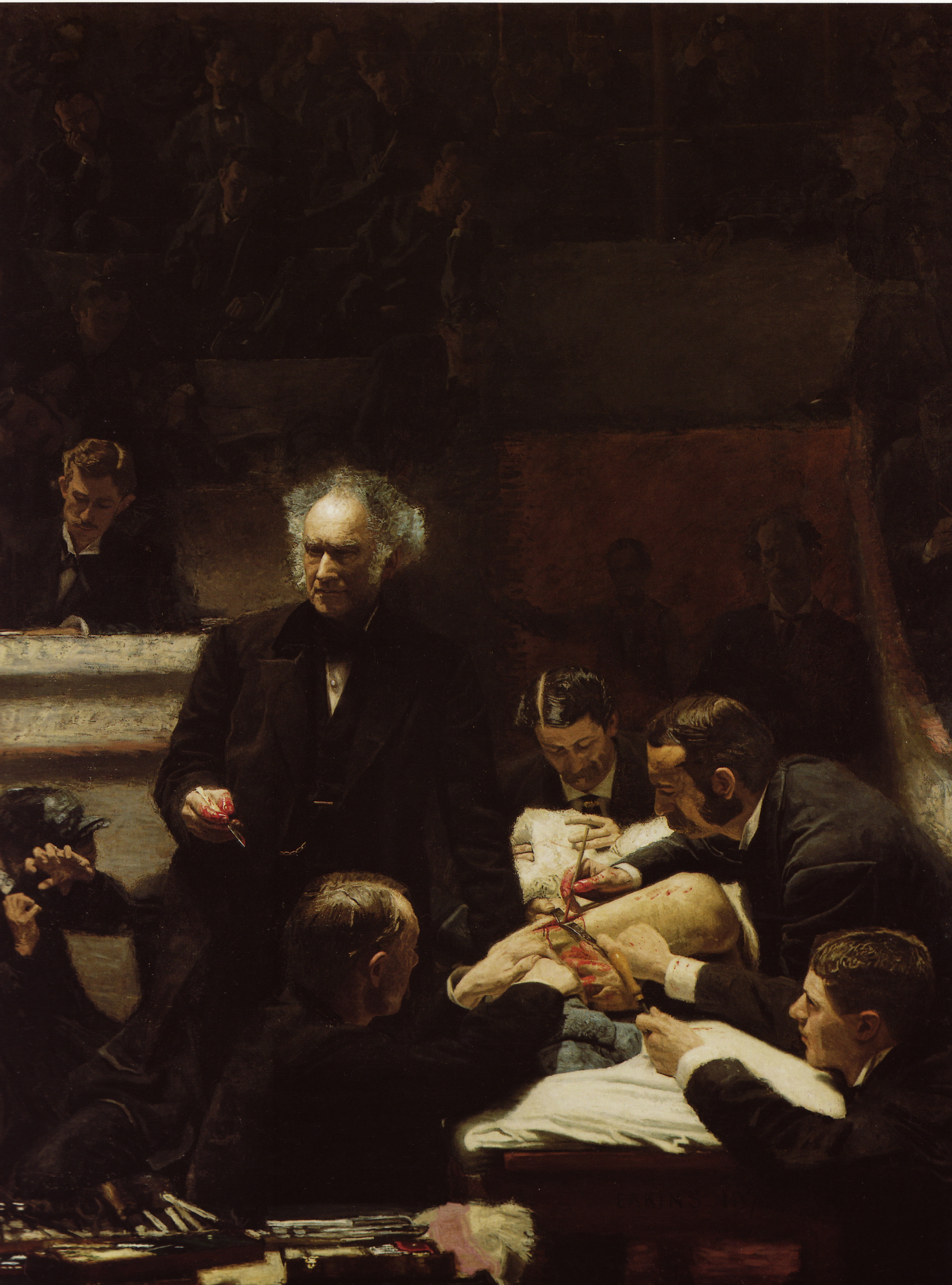The Gross Clinic, or, The Clinic of Dr. Gross, is an 1875 painting by American artist Thomas Eakins, one of the most important artists in American art history. The Gross Clinic is a 240 cm by 200 cm oil painting on canvas. The painting portrays Dr. Samuel David Gross lecturing the medical students of Thomas Jefferson University. Among the students, Thomas Eakins can be found in the far right row in the front taking notes. The clerk, Dr. Franklin West, is also taking notes on the far left. On the front of the surgical table the signature of Thomas Eakins can be found. The painting can be found in the Philadelphia Museum of Art or the Pennsylvania Academy of Fine Arts.
In 2007, PAFA and the Philadelphia Museum of Art purchased The Gross Clinic, or the Portrait of Dr. Samuel D. Gross by Eakins. More than 3,400 donors helped to keep the painting in Philadelphia. In 1875, the Centennial Exhibition challenged Philadelphian artists to create works that would bring honor to America.
Young artist Thomas Eakins accepted the challenge to bring honor to his country, and painted Dr. Samuel D. Gross (1805-1884), a skilled American surgeon, which Eakins had met in human anatomy at Jefferson Medical College. With a complex and dramatic subject, Eakins painted a renowned American surgeon, adding his interest of the human anatomy. The painting is one of greatest masterpieces in the history of American art.
In 1876, after being rejected by the Centennial Exhibition, The Gross Clinic was exhibited at the Haseltine Galleries. At the suggestion of Dr. Gross, the painting was hung in the Army Medical Pavilion of the Centennial Exhibition. In 1878, Jefferson Medical College bought the painting for $200.
The Gross Clinic is known from its realism, and is honored for acknowledging the importance of surgery by separating it from amputation, and for portraying the school of medicine of the time period. This painting portrays an operation, compared to amputation which most patiences endured during this time, and portrays the unhygienic surgical setting before the practice of asepsis. On the opposite hand, in 1889, The Agnew Clinic portrays a more sanitary operation, and included a professional nurse, Mary Clymer.
The painting was shocking to many, because it depicts a male teenage patient and a large amount of blood. The mother of the boy can be found on the left of the operation. Many viewers found this painting to be very shocking.
In 1876, the Committee of Selection rejected the painting to be part of the International Exhibition of Arts, Manufactures and Products of the Soil and Mine in Philadelphia. Later, the painting was displayed in Ward One of the U.S. Army Post Hospital. Many opposing opinions arose in discussion of this painting.
Debates about the painting were very common during this time. Topics ranged from violence to the mood of the painting. Many believe the painting portrays mastery of the human body.
This painting brought honor to the professions of painting and surgery. It is one of the finest paintings of American history. Despite this art work providing many different perspectives, in 1876, it was on display in the U.S. Army Post Hospital during the Centennial Exposition.
After being purchased for $200 during the Centennial Exposition, the painting was held at Thomas Jefferson University, and later moved to the Jefferson Alumni Hall. The painting was later sold to the National Gallery of Art and the Crystal Bridges Museum of American Art for $68,000,000. This was the most offered for a piece of American art before World War II.
The sale was completed in secret. Many opposed moving the art work from its location of creation, and founded a fund to purchase the art work back. The fund raised $30,000,000, and Wachovia loaned $38,000,000 to keep the painting in Philadelphia Museum of Art and the Pennsylvania Academy of Fine Arts.
To cover the rest of the $68,000,000 price, the Pennsylvania Academy of Fine Arts sold The Cello Player by Eakins. The Philadelphia Museum of Art sold Cowboy Singing, and two sketches of Cowboys in the Badlands all by Eakins to the Anschutz Collection and the Denver Art Museum. Later, Cowboys in the Badlands was sold to the Anschutz Collection for $5,383,500.
In 1875, Eakins created the compositional study, and it remains at the Philadelphia Museum of Art. Also in 1875, Eakins created the study for Dr. Gross, and it remains at the Worcester Art Museum. A black and white drawing of the painting was made to be photographed by Eakins in 1875, and it remains in the Metropolitan Museum of Art. In 1876, Eakins created Drawing of Two Heads, and it remains in the Philadelphia Museum of Art. In 1875, Eakins created the study of Robert C.V. Meyers.
The Gross Clinic has gone through art restoration three times. In 1917, the first restoration began which left the painting with a reddish tone. This deviation of the original art work was upsetting to many fans alike.
In 1915, H. Stevenson reinforced the painting backing by applying plywood, which was replaced in 1940 by Hannah Mee Horner with a plywood that threatened to tear the painting. In 1961, the painting went through a second restoration under Theodor Siegl. Siegl removed the threatening plywood and the faces in the upper right of the painting.
In 2009, the painting went through its last restoration at the Philadelphia Museum of Art. This restoration was meant to remove the changes made during the first restoration. The museum used an ink wash painting by Eakins and a photograph of the original art work to restore the changes.
Mark Tucker, an experienced conservative, led the conservative team during the last restoration. Their goals include understanding the methods and materials with sensitivity and insight. During the restoration period, The Gross Clinic was not visible to the public, but in 2010, the painting was returned to its original place.
Eakins intended to express this part of his life to his audience. The recovery of the painting is possible. More restorations are in order. The changes in the painting over time will be part of the history object.
This work is an oil painting. In this work, the artist used light to dramatically highlight the doctor and the operation. The artist of this work was concerned with light in a way that recalls Rembrandt. This work belongs to the nineteenth century. This work represents a group of doctors in the operating room, advancements in modern medical science, and a surgical facility. The viewpoint of this work is primarily that of an observer. The style of painting most closely identified with this work is realism.
_-_Google_Art_Project.jpg)






